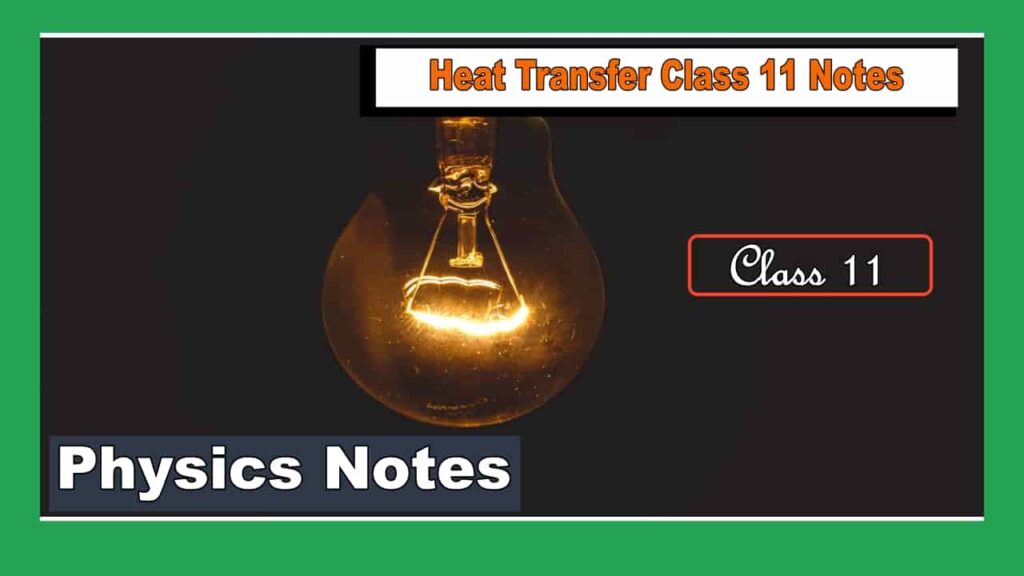Conduction, convection, and radiation are the three methods to Heat Transfer from one point to another.Usually, conduction takes place in solids, convection in liquids & gases, and radiation does not require a medium.

Conduction
It involves heat-transfer from the hot end of a body to its cold end due to molecular collision to minimize the temperature difference. However, the conduction does not include the actual movement of the molecule.
In general, solids are better conductors than liquids & liquids are better conductors than gases. Metals are much better conductors than non-metals. Free-moving electrons contain by metal which carry heat from one point to the other in metal.
For a given body the rate of flow of heat by the conduction is directly proportional to the cross-sectional area, proportional to the temperature difference between the ends \& inversely proportional to the distance between the ends. Hence, a thick & short metallic rod conducts more heat in a given time across its two ends than a thin & longer metal rod.
Applications of Thermal Conduction :
In winter, a stone floor feels cold to the bare feet, but a carpet on the same floor feels warm eventhough they are at the same temperature Since the stone is a better conductor of heat than thecarpet, hence the feet feel cold on the stone but not on the carpet.
Due to the continuous working of refrigerators, a thick layer of ice deposits on the outside and the inside of the freezer, and hence, It has to be switched off for defrosting. The cooling action of the freezer slows down because ice is a bad conductor of heat. Hence, defrosting improves the functioning of a refrigerator.
Convection
It involves the transfer of heat due to the movement of molecules. The hot molecules have higherkinetic energy and hence, they move towards the cold region and in order to occupy their position, thecold molecules come from the cold region. It results in convection currents and consequently, the entiresystem gets heated. Convection is common in liquids and gases.
Application of Thermal Convection
The function of ventilation in houses is based on convection. During winter, air comes out from housesbecause the inside temperature is high whereas in summer air comes in because the outertemperature is high. It involves the movement of air from high in temperature to lower temperature by convection currents.
In refrigerators, the freezer is set at the top. The temperature of the air at the bottom is higher than that inside the freezer. The warm bottom air moves up and cold freezer air moves down. It results in the convection current of air in the refrigerators that cool the entire inner space.
In geysers and water heaters, the heating elements are fitted at the bottom. It causes hot bottom water to move up and cold topwater to move down and thereby setting up a convection current. Consequently, the entire water content gets heated.
Radiation
A medium is required to transfer heat by convection and conduction, while a medium is not required to convert heat by radiation. All bodies reflect heat radiation at all temperatures.
The amount of heat radiation radiated per unit time depends on the nature of the radiating surface. Surface area and temperature of the body. Similarly, all bodies absorb a part of the thermal radiation incident on them.
When an amount of thermal radiation is incident on a body, it is partly absorbed, partly reflected, and partly transmitted. The amount of absorbed, reflected, and transmitted thermal radiation depends on the nature & temperature of the body.
When a body absorbs more and emits less radiation, its temperature goes up, when a body emits more and absorbs less radiation. Its temperature goes down and when a body absorbs and emits an equal amount of radiation, its temperature remains constant. A good absorber is a good emitter and similarly a poor absorber is a poor emitter.
Black body
Black body is defined as a body that absorbs all the radiation falling on it.
Applications of Black Body
Such a body will emit radiation at the fastest rate on heating. Lampblack is close to a blackbody. Bolometer and thermopile are close to a blackbody. Bolometer and thermopile are instruments used to measure thermal radiation.A rough black surface is a good emitter as well as a good absorber of heat radiation while a bright polished surface is a bad emitter as well as a bad absorber. Hence, a bright polished cup keeps tea or coffee warm for a longer time in comparison to a rough black cup.
The base of an electric iron is highly polished so that it does not lose heat by radiation. While or light colours of houses keep cooler in summer because the light-coloured surface does not absorb much solar radiation.
NEWTON’S LAW OF COOLING
It states that the rate of loss of heat from a hot body is directly proportional to the temperature difference between the body and is surrounded.
[latexpage]A hot water during cooling from $100^{\circ} \mathrm{C}$ to $90^{\circ} \mathrm{C}$ takes less time than that in cooling from $50^{\circ} \mathrm{C}$ to $40^{\circ} \mathrm{C}$. [latexpage]Hence, when hot water and fresh tap water are placed inside a refrigerator, the rate of cooling of hot water is found to be faster than that of fresh tap water.
If hot coffee is served with cream in a cup and without cream in another cup, the creamed coffee remains hot for a longer time.
LAWS OF THERMODYNAMICS
First Law
The first law of thermodynamics is a particular and more rigorous statement of the principle ofconservation of energy.
When a substance absorbs an amount of heat at constant pressure, then part of this heat is used unto raise the temperature which results in the increase of internal energy. The rest of the heatis used in doing work in allowing the external pressure.
Second Law
It is impossible to construct a device working in a cyclic process whose sole effect is the transfer of heat from a body at a lower temperature to a body at a higher temperature ‘OR’ it is impossible to construct an engine working on a cyclic process whose sole effect is the conversion of all heat supplied to it in an equivalent amount of work.
Entropy
It is a measure of the randomness of disorders of a system. It is a thermal property of a body that remains constant during an adiabatic process.
Third Law:
At absolute zero (zero Kelvin) temperature the total sum of absolute entropy of a crystalline solidis equal to zero.
THERMODYNAMIC PROCESS
Isobaric Process: It involves constant pressure.
Isochoric Process: It involves constant volume.
Isothermal Process: It involves constant temperature. However, heat changes. Adiabatic Process: It involves constant heat. However, temperatures changes. The melting process and boiling process are common examples of an isothermal process. because they occur at constant temperatures. Practically, a perfect adiabatic process is impossible.
However, its approximate examples are.
(i) Sudden bursting of the tube of a bicycle tyre
(ii) Propagation of sound in air
(iii) Expansion of gas or vapour in a heat engine.

